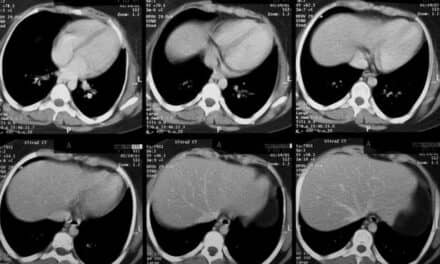Earlier this week, Siemens Healthineers unveiled its Somatom Confidence RT Pro dedicated CT scanner at the 2016 Annual Meeting of the American Society for Radiation Oncology (ASTRO) in Boston. Designed for radiation oncologists and physicists, the new Somatom Confidence Pro CT system is the first system of its kind to provide electron density images with a “single-energy” scan.
Thanks to its DirectDensity algorithm, the CT scanner provides personalized images of the patient, for optimal tumor and organs-at-risk contouring by the clinician—and images optimized for radiation therapy treatment dose calculation performed by a physicist. Enhancing Somatom Confidence RT Pro is the new version of the software syngo.via RT Image Suite, which is designed to reduce sources of error.
The Somatom Confidence RT Pro provides all the functionalities of a CT simulator, which produces images that are used by physicians to define the target and organs at risk for treatment prescription. It also offers advanced image quality, due to the new detector and iterative reconstruction methods, which is needed for contouring.
Gabriel Haras, MD, head of radiation oncology at Siemens Healthineers, spoke out about the new system, saying: “This offering complements the dedicated Siemens Healthineers MR, CT, PET/CT and software portfolio for radiation therapy and demonstrates how it can help health care facilities improve their outcomes while also lowering costs.”
During treatment preparation, radiation oncologists need the best possible CT image quality for contouring tumors and sparing healthy-organ tissue, while physicists need a CT image that shows the patient’s physical properties—the so-called “electron density”—for treatment planning purposes. Until now, CT images for radiation therapy were optimized primarily for physicists to acquire electron density representations that are as accurate as possible. With this goal in mind, CT acquisition parameters such as tube voltage and kV settings were typically not varied, because this would make the process of dose calculation more complicated and error prone.
But there are many benefits to acquiring CT images with different kV settings, Siemens officials say. In the case of bariatric patients, who have higher x-ray attenuation, an x-ray tube voltage higher than 120 kV is advantageous, as it produces images with strong contrast-to-noise ratio. But pediatric patients may be exposed to an unnecessarily large imaging dose at the conventional 120 kV, while lower kV could reduce the CT dose and still deliver quality images.
What’s more, the Somatom Confidence RT Pro is complemented by Siemens’ new multimodality simulation and contouring software, syngo.via RT Image Suite. This technology streamlines the simulation process by marking the patient—a key step in delivering treatment. In addition, the software helps determine the right treatment strategy for moving tumors, such as those found in the liver and lungs, and facilitates the adoption of new approaches like treatment in mid-ventilation. With the ability to visualize the quantitative 3D tumor trajectory, the decision on how to best treat moving tumors—by delivering the treatment dose to the tumor while sparing healthy tissue—is simplified.
For more information about this technology, visit Siemens Healthineers,




